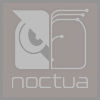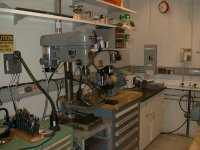Hi,
I'm in the process of building myself a wood lathe, and that includes wiring and setting up a VFD to run the motor (Forward or Reverse) and control its speed. Nothing fancy, but I'm a true beginner in this, so as expected, my first attempts were not successful...
Components are the following:
- Start pulse switch (NO)
- Emergency stop switch (NC)
- Contactor (3 phase 400V with 230V coil)
- VFD (Fuji electrics Frenic-Eco 4Kw - Reference: FRN4.0F1S-4E - Fuji Frenic Eco F1)
- 5k Ohm potentiometer
- 3 positions switch (REV - STOP - FWD)
- 3 phase 400V asynchronous 2,2Kw motor (Note: I tested the motor removing the VFD from the equation (wiring the contactor directly to the motor and running it with Start & stop switches), and it works fine).
The VFD is connected to the contactor and turned ON or OFF by the start/stop switches (This part works fine).
I then would like the 3 positions switch to run the motor in forward or reverse, or stop it, and control its speed with the potentiometer.
Documentation can be found here:
Starting guide: https://www.fujielectric-europe.com/gallery/download/download_305/sg_eco_en_2_1_0.pdf
User manual: https://www.fujielectric-europe.com/documents/low_voltage_drives/F1_InstructionManual_EN.pdf
Here are the detailed schematics of the current wiring, as well as descriptions (from the VFD's user manual) of the input pins used.

As stated on the image, some components are not yet present:
- External fan (Will be used to cool the motor when running at low speed)
- External fan power supply
- NC security switch (the lathe will feature a lever actioning a bicycle style braking system in order for me to be able to lock the spindle in any position. If this lever is not in its rest position (brakes off), the lathe should not run.)
Current setup of basic functions of the VFD are the following:
- F01 (Frequency command 1) : 1 (1: Enable voltage input to terminal [12] (0 to 10V DC))
- F02 (RUN command): 1 (1: Enable terminal command FWD or REV
- F03 (Maximum Frequency) : 60Hz (input range : "25.0 to 120.0 Hz")
- F04 (Base Frequency) : 50Hz (input range: "25.0 to 120.0 Hz")
- F05 (Rated voltage at base frequency) : 400V ("0: Output a voltage in proportion to input voltage | 80 to 240V: Output a voltage AVR-controlled (200V AC series) | 160 to 500V: Output a voltage AVR-controlled (400V AC series)
- F07 (Acceleration time): 6s ( 0.00 to 3600 s (Entering 0.00 cancels the acceleration time, requiring external soft-start))
- F08 (Deceleration time): 6s ( 0.00 to 3600 s (Entering 0.00 cancels the deceleration time, requiring external soft-start))
- E98 & E99 (Command assignment to: [FWD] [REV]): 21 (21 (1021): Switch normal/inverse operation - IVS)
As far as I know, other functions have default value (This is a second hand VFD, so it's not necessarily setup with factory default values. When I bought it, the seller demonstrated that the VFD works by running a motor in front of me).
Any help would really be appreciated. I did my very best not to come here for the first time with a vague and undocumented question,... I tried real hard to do it all by myself, but it seems I failed at some point, and I'm really curious about where . Either the wiring is incorrect or the VFD setup is not adapted to it (or both...).
. Either the wiring is incorrect or the VFD setup is not adapted to it (or both...).
Thanks in advance,
Stan
I'm in the process of building myself a wood lathe, and that includes wiring and setting up a VFD to run the motor (Forward or Reverse) and control its speed. Nothing fancy, but I'm a true beginner in this, so as expected, my first attempts were not successful...
Components are the following:
- Start pulse switch (NO)
- Emergency stop switch (NC)
- Contactor (3 phase 400V with 230V coil)
- VFD (Fuji electrics Frenic-Eco 4Kw - Reference: FRN4.0F1S-4E - Fuji Frenic Eco F1)
- 5k Ohm potentiometer
- 3 positions switch (REV - STOP - FWD)
- 3 phase 400V asynchronous 2,2Kw motor (Note: I tested the motor removing the VFD from the equation (wiring the contactor directly to the motor and running it with Start & stop switches), and it works fine).
The VFD is connected to the contactor and turned ON or OFF by the start/stop switches (This part works fine).
I then would like the 3 positions switch to run the motor in forward or reverse, or stop it, and control its speed with the potentiometer.
Documentation can be found here:
Starting guide: https://www.fujielectric-europe.com/gallery/download/download_305/sg_eco_en_2_1_0.pdf
User manual: https://www.fujielectric-europe.com/documents/low_voltage_drives/F1_InstructionManual_EN.pdf
Here are the detailed schematics of the current wiring, as well as descriptions (from the VFD's user manual) of the input pins used.

As stated on the image, some components are not yet present:
- External fan (Will be used to cool the motor when running at low speed)
- External fan power supply
- NC security switch (the lathe will feature a lever actioning a bicycle style braking system in order for me to be able to lock the spindle in any position. If this lever is not in its rest position (brakes off), the lathe should not run.)
Current setup of basic functions of the VFD are the following:
- F01 (Frequency command 1) : 1 (1: Enable voltage input to terminal [12] (0 to 10V DC))
- F02 (RUN command): 1 (1: Enable terminal command FWD or REV
- F03 (Maximum Frequency) : 60Hz (input range : "25.0 to 120.0 Hz")
- F04 (Base Frequency) : 50Hz (input range: "25.0 to 120.0 Hz")
- F05 (Rated voltage at base frequency) : 400V ("0: Output a voltage in proportion to input voltage | 80 to 240V: Output a voltage AVR-controlled (200V AC series) | 160 to 500V: Output a voltage AVR-controlled (400V AC series)
- F07 (Acceleration time): 6s ( 0.00 to 3600 s (Entering 0.00 cancels the acceleration time, requiring external soft-start))
- F08 (Deceleration time): 6s ( 0.00 to 3600 s (Entering 0.00 cancels the deceleration time, requiring external soft-start))
- E98 & E99 (Command assignment to: [FWD] [REV]): 21 (21 (1021): Switch normal/inverse operation - IVS)
As far as I know, other functions have default value (This is a second hand VFD, so it's not necessarily setup with factory default values. When I bought it, the seller demonstrated that the VFD works by running a motor in front of me).
Any help would really be appreciated. I did my very best not to come here for the first time with a vague and undocumented question,... I tried real hard to do it all by myself, but it seems I failed at some point, and I'm really curious about where
 . Either the wiring is incorrect or the VFD setup is not adapted to it (or both...).
. Either the wiring is incorrect or the VFD setup is not adapted to it (or both...). Thanks in advance,
Stan




